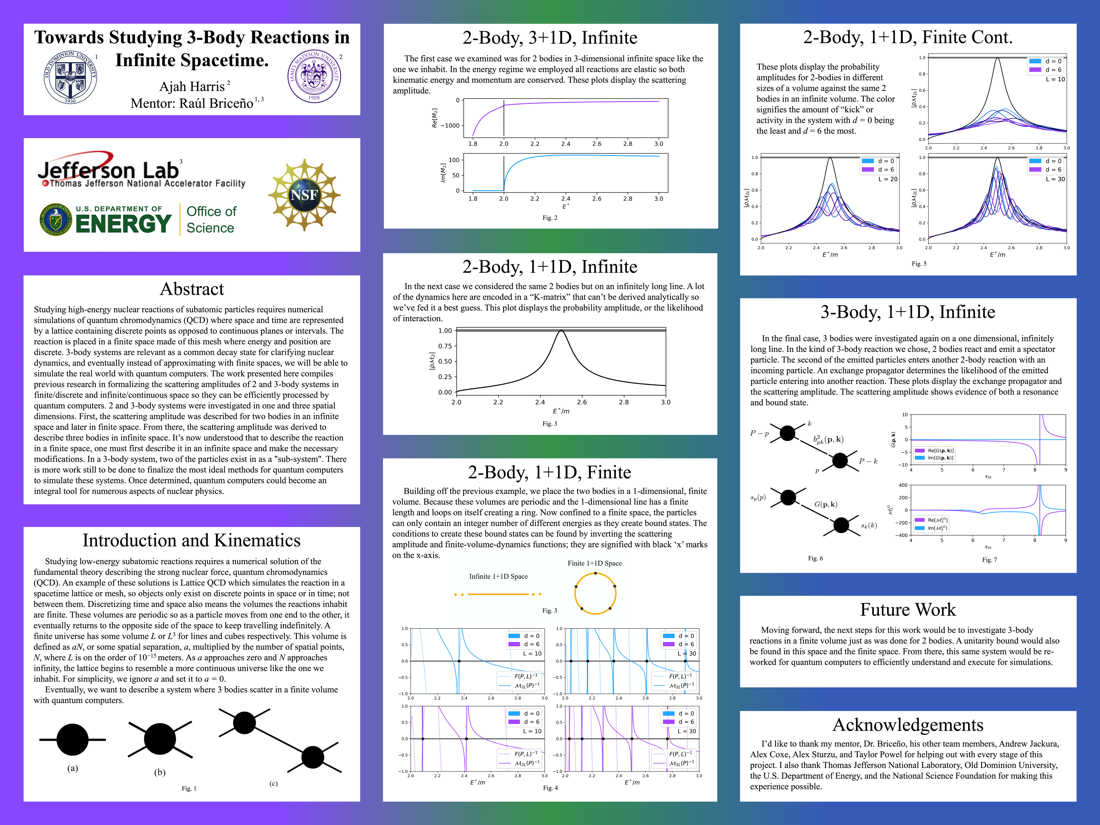Undergraduate Research at Jefferson Lab
Towards Studying 3-Body Reactions in a Finite Spacetime
Student: Ajah Harris
School: James Madison University
Mentored By: Dr. Raul Briceño
Studying low-energy nuclear reactions of subatomic particles requires numerical simulations of quantum chromodynamics (QCD) where space and time is represented by a lattice containing discrete points as opposed to continuous planes or intervals. The reaction is placed in a finite space made of this mesh where energy and position are discrete. 3-body systems are relevant as a common decay state for clarifying nuclear dynamics, and eventually instead of approximating with finite spaces, we will be able to simulate the real world with quantum computers. The work presented here compiles previous research in formalizing the scattering amplitudes of 2 and 3-body systems in finite/discrete and infinite/continuous space so they can be efficiently processed by quantum computers. 2 and 3- body systems were investigated in one and three spatial dimensions. First, the scattering amplitude was described for two bodies in an infinite space and later in finite space. From there, the scattering amplitude was derived to describe three bodies in infinite space. It's now understood that to describe the reaction in a finite space, one must first describe it in an infinite space and make the necessary modifications. In a 3-body system, two of the particles exist in a stable bound state so instead of using the 2-body understanding within the 3-body system, it's described as a "sub-system". There is more work still to be done to finalize the most ideal methods for quantum computers to simulate these systems. Once determined, quantum computers could become an integral tool for numerous aspects of nuclear physics.
[Watch the presentation on YouTube]

Citation and linking information
For questions about this page, please contact Education Web Administrator.
